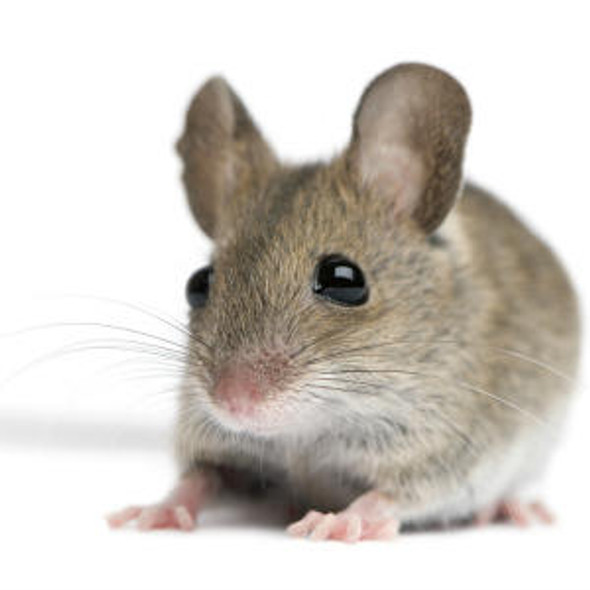Human HNF1 alpha(Hepatocyte nuclear factor 1-alpha) ELISA Kit
- SKU:
- HUFI03142
- Product Type:
- ELISA Kit
- Size:
- 96 Assays
- Uniprot:
- P20823
- Sensitivity:
- 18.75pg/ml
- Range:
- 31.25-2000pg/ml
- ELISA Type:
- Sandwich ELISA, Double Antibody
- Synonyms:
- HNF1 alpha
- Reactivity:
- Human
Description
| Product Name: | Human HNF1 alpha(Hepatocyte nuclear factor 1-alpha) ELISA Kit |
| Product Code: | HUFI03142 |
| Size: | 96 Assays |
| Alias: | HNF1 alpha |
| Detection method: | Sandwich ELISA, Double Antibody |
| Application: | This immunoassay kit allows for the in vitro quantitative determination of Human HNF1 alpha concentrations in serum plasma and other biological fluids. |
| Sensitivity: | 18.75pg/ml |
| Range: | 31.25-2000pg/ml |
| Storage: | 4°C for 6 months |
| Note: | For Research Use Only |
| Recovery: | Matrices listed below were spiked with certain level of Human HNF1 alpha and the recovery rates were calculated by comparing the measured value to the expected amount of Human HNF1 alpha in samples. Enquire for more information. |
| Linearity: | The linearity of the kit was assayed by testing samples spiked with appropriate concentration of Human HNF1 alpha and their serial dilutions. The results were demonstrated by the percentage of calculated concentration to the expected. Enquire for more information. |
| CV(%): | Intra-Assay: CV<8% Inter-Assay: CV<10% |
| Component | Quantity | Storage |
| ELISA Microplate (Dismountable) | 8×12 strips | 4°C for 6 months |
| Lyophilized Standard | 2 | 4°C/-20°C |
| Sample/Standard Dilution Buffer | 20ml | 4°C |
| Biotin-labeled Antibody(Concentrated) | 120ul | 4°C (Protect from light) |
| Antibody Dilution Buffer | 10ml | 4°C |
| HRP-Streptavidin Conjugate(SABC) | 120ul | 4°C (Protect from light) |
| SABC Dilution Buffer | 10ml | 4°C |
| TMB Substrate | 10ml | 4°C (Protect from light) |
| Stop Solution | 10ml | 4°C |
| Wash Buffer(25X) | 30ml | 4°C |
| Plate Sealer | 5 | - |
Other materials and equipment required:
- Microplate reader with 450 nm wavelength filter
- Multichannel Pipette, Pipette, microcentrifuge tubes and disposable pipette tips
- Incubator
- Deionized or distilled water
- Absorbent paper
- Buffer resevoir
| Uniprot | P20823 |
| UniProt Protein Function: | HNF1A: Transcriptional activator that regulates the tissue specific expression of multiple genes, especially in pancreatic islet cells and in liver. Required for the expression of several liver specific genes. Binds to the inverted palindrome 5'- GTTAATNATTAAC-3'. Defects in HNF1A are a cause of hepatic adenomas familial (HEPAF). Hepatic adenomas are rare benign liver tumors of presumable epithelial origin that develop in an otherwise normal liver. Hepatic adenomas may be single or multiple. They consist of sheets of well-differentiated hepatocytes that contain fat and glycogen and can produce bile. Bile ducts or portal areas are absent. Kupffer cells, if present, are reduced in number and are non-functional. Conditions associated with adenomas are insulin-dependent diabetes mellitus and glycogen storage diseases (types 1 and 3). Bi-allelic inactivation of HNF1A, whether sporadic or associated with MODY3, may be an early step in the developmant of some hepatocellular carcinomas. Defects in HNF1A are the cause of maturity-onset diabetes of the young type 3 (MODY3); also symbolized MODY-3. MODY is a form of diabetes that is characterized by an autosomal dominant mode of inheritance, onset in childhood or early adulthood (usually before 25 years of age), a primary defect in insulin secretion and frequent insulin-independence at the beginning of the disease. Defects in HNF1A are the cause of susceptibility to diabetes mellitus insulin-dependent type 20 (IDDM20). IDDM20 is a multifactorial disorder of glucose homeostasis that is characterized by susceptibility to ketoacidosis in the absence of insulin therapy. Clinical fetaures are polydipsia, polyphagia and polyuria which result from hyperglycemia-induced osmotic diuresis and secondary thirst. These features can result in long-term complications that affect the eyes, kidneys, nerves, and blood vessels. Belongs to the HNF1 homeobox family. 3 isoforms of the human protein are produced by alternative splicing. |
| UniProt Protein Details: | Protein type:DNA-binding; Transcription factor Chromosomal Location of Human Ortholog: 12q24.2 Cellular Component: nucleoplasm; protein complex; cytoplasm; nucleus Molecular Function:protein dimerization activity; protein binding; protein homodimerization activity; DNA binding; protein heterodimerization activity; transcription factor activity Biological Process: regulation of transcription from RNA polymerase II promoter; transcription, DNA-dependent; insulin secretion; glucose import; positive regulation of transcription, DNA-dependent; positive regulation of transcription from RNA polymerase II promoter; glucose homeostasis Disease: Diabetes Mellitus, Insulin-dependent, 20; Diabetes Mellitus, Insulin-dependent; Hepatic Adenomas, Familial; Maturity-onset Diabetes Of The Young, Type 3; Renal Cell Carcinoma, Nonpapillary; Diabetes Mellitus, Noninsulin-dependent |
| NCBI Summary: | The protein encoded by this gene is a transcription factor required for the expression of several liver-specific genes. The encoded protein functions as a homodimer and binds to the inverted palindrome 5'-GTTAATNATTAAC-3'. Defects in this gene are a cause of maturity onset diabetes of the young type 3 (MODY3) and also can result in the appearance of hepatic adenomas. Alternative splicing results in multiple transcript variants encoding different isoforms. [provided by RefSeq, Apr 2015] |
| UniProt Code: | P20823 |
| NCBI GenInfo Identifier: | 51338763 |
| NCBI Gene ID: | 6927 |
| NCBI Accession: | P20823.2 |
| UniProt Secondary Accession: | P20823,Q2M3H2, Q99861, A5Z2R8, E0YMJ5, E0YMK0, E0YMK1 E2I9R4, E2I9R5, F5H5U3, |
| UniProt Related Accession: | P20823 |
| Molecular Weight: | 12,491 Da |
| NCBI Full Name: | Hepatocyte nuclear factor 1-alpha |
| NCBI Synonym Full Names: | HNF1 homeobox A |
| NCBI Official Symbol: | HNF1A |
| NCBI Official Synonym Symbols: | HNF1; LFB1; TCF1; MODY3; TCF-1; HNF-1A; IDDM20 |
| NCBI Protein Information: | hepatocyte nuclear factor 1-alpha |
| UniProt Protein Name: | Hepatocyte nuclear factor 1-alpha |
| UniProt Synonym Protein Names: | Liver-specific transcription factor LF-B1; LFB1; Transcription factor 1; TCF-1 |
| Protein Family: | Hepatocyte nuclear factor |
| UniProt Gene Name: | HNF1A |
| UniProt Entry Name: | HNF1A_HUMAN |
*Note: Protocols are specific to each batch/lot. For the correct instructions please follow the protocol included in your kit.
Before adding to wells, equilibrate the SABC working solution and TMB substrate for at least 30 min at 37°C. When diluting samples and reagents, they must be mixed completely and evenly. It is recommended to plot a standard curve for each test.
| Step | Protocol |
| 1. | Set standard, test sample and control (zero) wells on the pre-coated plate respectively, and then, record their positions. It is recommended to measure each standard and sample in duplicate. Wash plate 2 times before adding standard, sample and control (zero) wells! |
| 2. | Aliquot 0.1ml standard solutions into the standard wells. |
| 3. | Add 0.1 ml of Sample / Standard dilution buffer into the control (zero) well. |
| 4. | Add 0.1 ml of properly diluted sample ( Human serum, plasma, tissue homogenates and other biological fluids.) into test sample wells. |
| 5. | Seal the plate with a cover and incubate at 37 °C for 90 min. |
| 6. | Remove the cover and discard the plate content, clap the plate on the absorbent filter papers or other absorbent material. Do NOT let the wells completely dry at any time. Wash plate X2. |
| 7. | Add 0.1 ml of Biotin- detection antibody working solution into the above wells (standard, test sample & zero wells). Add the solution at the bottom of each well without touching the side wall. |
| 8. | Seal the plate with a cover and incubate at 37°C for 60 min. |
| 9. | Remove the cover, and wash plate 3 times with Wash buffer. Let wash buffer rest in wells for 1 min between each wash. |
| 10. | Add 0.1 ml of SABC working solution into each well, cover the plate and incubate at 37°C for 30 min. |
| 11. | Remove the cover and wash plate 5 times with Wash buffer, and each time let the wash buffer stay in the wells for 1-2 min. |
| 12. | Add 90 µl of TMB substrate into each well, cover the plate and incubate at 37°C in dark within 10-20 min. (Note: This incubation time is for reference use only, the optimal time should be determined by end user.) And the shades of blue can be seen in the first 3-4 wells (with most concentrated standard solutions), the other wells show no obvious color. |
| 13. | Add 50 µl of Stop solution into each well and mix thoroughly. The color changes into yellow immediately. |
| 14. | Read the O.D. absorbance at 450 nm in a microplate reader immediately after adding the stop solution. |
When carrying out an ELISA assay it is important to prepare your samples in order to achieve the best possible results. Below we have a list of procedures for the preparation of samples for different sample types.
| Sample Type | Protocol |
| Serum | If using serum separator tubes, allow samples to clot for 30 minutes at room temperature. Centrifuge for 10 minutes at 1,000x g. Collect the serum fraction and assay promptly or aliquot and store the samples at -80°C. Avoid multiple freeze-thaw cycles. If serum separator tubes are not being used, allow samples to clot overnight at 2-8°C. Centrifuge for 10 minutes at 1,000x g. Remove serum and assay promptly or aliquot and store the samples at -80°C. Avoid multiple freeze-thaw cycles. |
| Plasma | Collect plasma using EDTA or heparin as an anticoagulant. Centrifuge samples at 4°C for 15 mins at 1000 × g within 30 mins of collection. Collect the plasma fraction and assay promptly or aliquot and store the samples at -80°C. Avoid multiple freeze-thaw cycles. Note: Over haemolysed samples are not suitable for use with this kit. |
| Urine & Cerebrospinal Fluid | Collect the urine (mid-stream) in a sterile container, centrifuge for 20 mins at 2000-3000 rpm. Remove supernatant and assay immediately. If any precipitation is detected, repeat the centrifugation step. A similar protocol can be used for cerebrospinal fluid. |
| Cell culture supernatant | Collect the cell culture media by pipette, followed by centrifugation at 4°C for 20 mins at 1500 rpm. Collect the clear supernatant and assay immediately. |
| Cell lysates | Solubilize cells in lysis buffer and allow to sit on ice for 30 minutes. Centrifuge tubes at 14,000 x g for 5 minutes to remove insoluble material. Aliquot the supernatant into a new tube and discard the remaining whole cell extract. Quantify total protein concentration using a total protein assay. Assay immediately or aliquot and store at ≤ -20 °C. |
| Tissue homogenates | The preparation of tissue homogenates will vary depending upon tissue type. Rinse tissue with 1X PBS to remove excess blood & homogenize in 20ml of 1X PBS (including protease inhibitors) and store overnight at ≤ -20°C. Two freeze-thaw cycles are required to break the cell membranes. To further disrupt the cell membranes you can sonicate the samples. Centrifuge homogenates for 5 mins at 5000xg. Remove the supernatant and assay immediately or aliquot and store at -20°C or -80°C. |
| Tissue lysates | Rinse tissue with PBS, cut into 1-2 mm pieces, and homogenize with a tissue homogenizer in PBS. Add an equal volume of RIPA buffer containing protease inhibitors and lyse tissues at room temperature for 30 minutes with gentle agitation. Centrifuge to remove debris. Quantify total protein concentration using a total protein assay. Assay immediately or aliquot and store at ≤ -20 °C. |
| Breast Milk | Collect milk samples and centrifuge at 10,000 x g for 60 min at 4°C. Aliquot the supernatant and assay. For long term use, store samples at -80°C. Minimize freeze/thaw cycles. |










